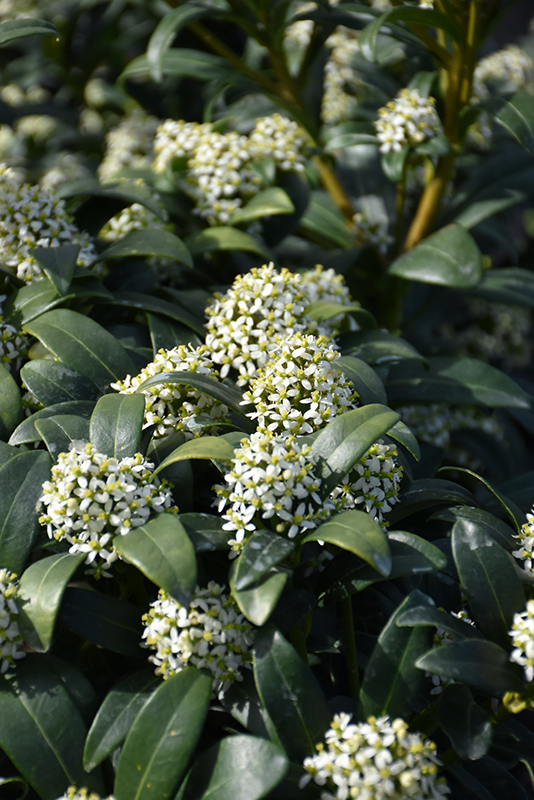Dwarf Female Japanese Skimmia
Description
A smaller variety with glossy green narrow leaves and panicles of sweetly fragrant white flowers in spring; clusters of bright red berries in fall and persist into winter; excellent for low borders and containers
Landscape Attributes
Dwarf Female Japanese Skimmia is a multi-stemmed evergreen shrub with a mounded form. Its average texture blends into the landscape, but can be balanced by one or two finer or coarser trees or shrubs for an effective composition.
Dwarf Female Japanese Skimmia is recommended for the following landscape applications;
Planting & Growing
Dwarf Female Japanese Skimmia will grow to be about 3 feet tall at maturity, with a spread of 3 feet. It has a low canopy. It grows at a slow rate, and under ideal conditions can be expected to live for approximately 30 years. This is a female variety of the species which requires a male selection of the same species growing nearby in order to set fruit.
This shrub should be grown in a location with partial shade or which is shaded from the hot afternoon sun. It prefers to grow in average to moist conditions, and shouldn't be allowed to dry out. It is not particular as to soil pH, but grows best in rich soils. It is somewhat tolerant of urban pollution. This is a selected variety of a species not originally from North America.
Dwarf Female Japanese Skimmia makes a fine choice for the outdoor landscape, but it is also well-suited for use in outdoor pots and containers. Because of its height, it is often used as a 'thriller' in the 'spiller-thriller-filler' container combination; plant it near the center of the pot, surrounded by smaller plants and those that spill over the edges. It is even sizeable enough that it can be grown alone in a suitable container. Note that when grown in a container, it may not perform exactly as indicated on the tag - this is to be expected. Also note that when growing plants in outdoor containers and baskets, they may require more frequent waterings than they would in the yard or garden. Be aware that in our climate, this plant may be too tender to survive the winter if left outdoors in a container. Contact our experts for more information on how to protect it over the winter months.

